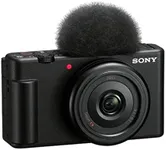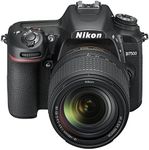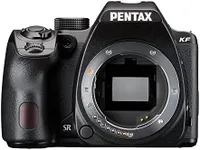Buying Guide for the Best Dslr Cameras
Choosing the right DSLR camera can feel overwhelming, but it becomes much easier when you focus on your needs and understand the key features. Think about what you want to photograph—whether it's family events, travel, sports, or creative projects. The best camera for you is the one that fits your style, is comfortable to use, and helps you capture the moments that matter most. By learning about the main specifications, you can make a confident decision and enjoy your photography journey.Sensor SizeThe sensor is the part of the camera that captures light and turns it into an image. Sensor size is important because it affects image quality, low-light performance, and how much of the scene you can capture. The most common sensor sizes in DSLRs are full-frame and APS-C. Full-frame sensors are larger and generally provide better image quality, especially in low light, but they make the camera bigger and heavier. APS-C sensors are smaller, making the camera lighter and more affordable, and are great for everyday photography. If you want the best image quality and plan to shoot in challenging lighting, a full-frame sensor might be best. If you want something more portable and still very capable, an APS-C sensor is a great choice.
MegapixelsMegapixels refer to the resolution of the camera, or how many millions of pixels make up each photo. More megapixels mean you can print larger photos or crop images without losing detail. However, higher megapixels don't always mean better photos, especially if you don't plan to print large images. For most people, a camera with 16 to 24 megapixels is more than enough for everyday use, sharing online, and making prints. If you want to do a lot of cropping or print very large photos, you might look for higher megapixel counts.
Autofocus SystemThe autofocus system helps the camera quickly and accurately focus on your subject. This is important for capturing sharp photos, especially of moving subjects like kids, pets, or sports. Autofocus systems are described by the number of focus points and how advanced the tracking is. Basic systems have fewer focus points and are fine for still subjects, while advanced systems have many points and can track moving subjects better. If you mostly shoot still life or landscapes, a basic autofocus system is enough. If you want to photograph action or unpredictable moments, look for a camera with a more advanced autofocus system.
Continuous Shooting SpeedContinuous shooting speed, often called burst rate, tells you how many photos the camera can take per second. This is important if you want to capture fast action, like sports or wildlife. Cameras with higher burst rates can take more photos in a short time, increasing your chances of getting the perfect shot. If you mostly take portraits or landscapes, a lower burst rate is fine. If you want to capture action, look for a higher burst rate.
Viewfinder TypeThe viewfinder is what you look through to compose your photo. DSLRs usually have optical viewfinders, which show you a real-time view through the lens. Some also have electronic features that display extra information. A clear, bright viewfinder makes it easier to frame your shots, especially in bright sunlight. If you value a traditional photography experience, an optical viewfinder is great. If you want more information or help with composition, look for a camera with extra viewfinder features.
Screen ArticulationScreen articulation refers to whether the camera's rear screen can tilt or swivel. This is helpful for shooting at unusual angles, like low to the ground or above your head, and for taking selfies or recording video. Fixed screens are fine for standard shooting, but articulated screens add flexibility. If you want to experiment with creative angles or plan to shoot video, an articulated screen is a useful feature.
Connectivity OptionsConnectivity options like Wi-Fi, Bluetooth, or NFC let you transfer photos to your phone or computer without cables. This makes it easy to share your photos quickly or back them up. If you want to post photos online right away or prefer wireless transfers, look for a camera with built-in connectivity features. If you don't mind using memory cards or cables, this may be less important.
Lens CompatibilityLens compatibility means which lenses you can use with your camera. Some cameras work with a wide range of lenses, while others are more limited. Having access to different lenses lets you try new styles, like wide landscapes or close-up portraits. If you want to grow your photography skills, choose a camera with a large selection of compatible lenses. If you plan to stick with one lens, this is less critical.














